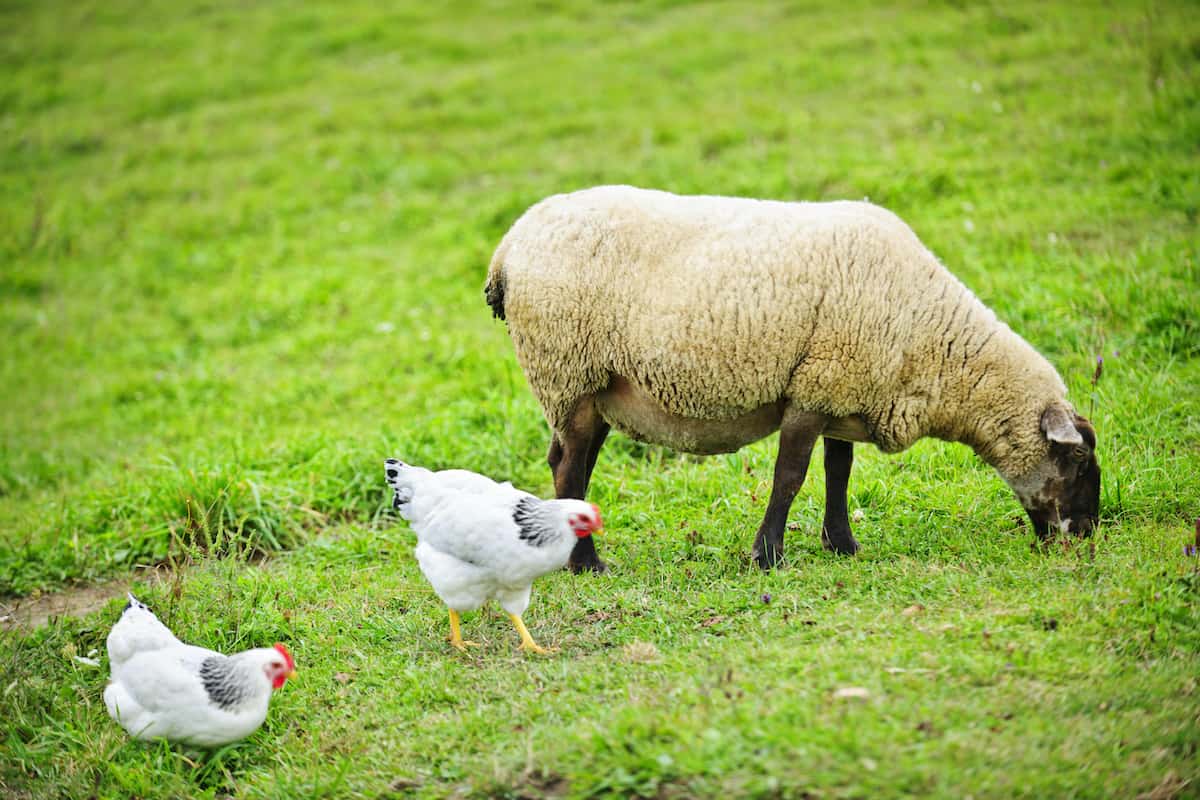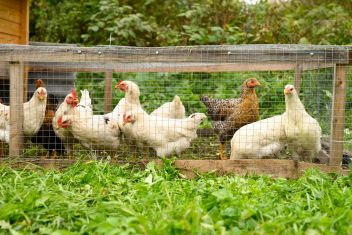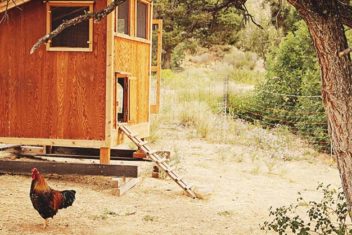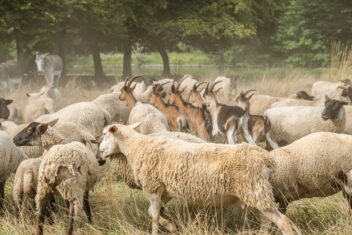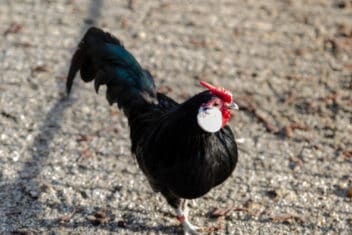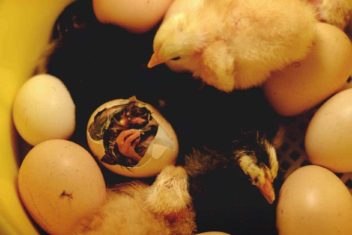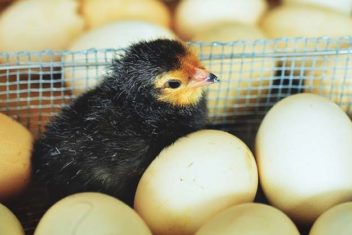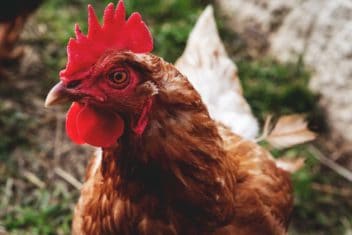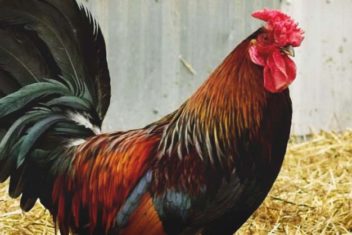In almost all of the time that I have raised sheep on my farm, I have raised them side-by-side with chickens.
It might look a little odd to see sheep grazing out among the chickens, and vice versa, but the reality is that there are many advantages to doing so.
Not only does it give the barnyard an amazing, symbiotic-respective aesthetic, but there are health, management, and environmental reasons to consider this method of multispecies grazing.
Pondering the idea of raising sheep and chickens together? Consider these tips and recommendations to help you get started.
Benefits of Keeping Sheep with Chickens
1. Parasite Control
The biggest benefit of keeping chickens with sheep, in my opinion, is for parasite control. Both species of animals are prone to parasites, of course, but they are different types of parasites that infest each creature.
As a result, you can make light work of your parasite management (and potentially reduce or eliminate the need for parasiticides both natural and chemical alike) by grazing sheep and chickens together.
Chickens are particularly effective, helping to pick through sheep droppings for what they consider to be tasty morsels – sheep worms and fly larvae!
Sheep won’t do much when it comes to breaking up the parasite life cycle in chickens, but it may help spread around the chicken manure if you’re able to graze them over large areas where you house your sheep.
By spreading around the manure, you make it less likely that chickens will reinfect themselves or each other with parasites, too.
2. Disease Control
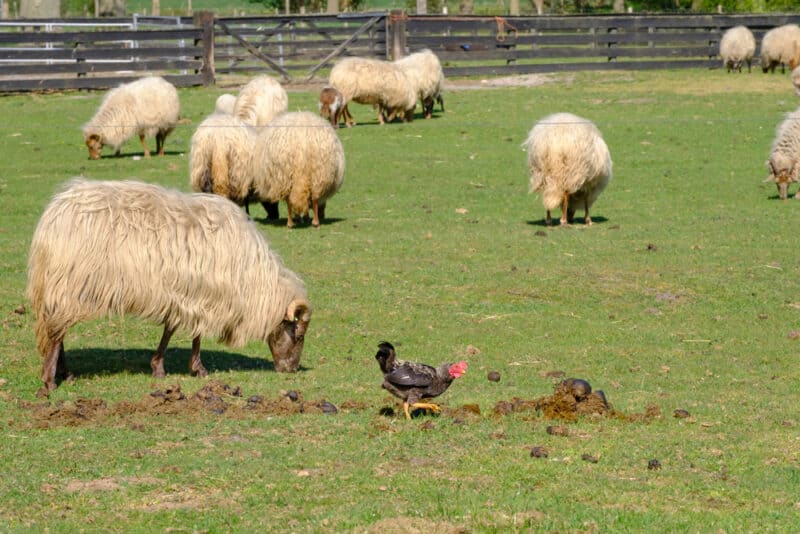
A secondary benefit of keeping sheep with chickens is disease control. Now, of course, paramount in any farm management plan is the ability to provide your animals (of all species) with access to fresh, clean water, nutritious feed, and adequate housing. You will want to follow good sanitation procedures and have great ventilation, too.
For most backyard chicken flocks, diseases are rare as long as your flock doesn’t come into contact with other flocks. That’s not to say that they can’t come into contact with other species of animals, though!
Keeping sheep with chickens is a good way to reduce the likelihood of disease simply because it often means that, by housing chickens in a large pasture or in a large barn shared with your sheep, you aren’t confining them to a super tiny coop.
Although one doesn’t necessarily befall the other, being able to keep chickens with sheep might open up a whole new area of housing that might not otherwise be possible. This can help you reduce the likelihood of overcrowding and disease.
3. Predator Prevention
The presence of a large animal in a sheep pen can also help reduce predation of your chickens. This is something I have witnessed, at least anecdotally, on my own farm.
Although some predators continue to be an issue (particularly those that can scale fences, like raccoons, and aerial predators, like hawks) we have found our weasel and fox burden to be much less this year.
We have never had much of an issue with coyotes (knock on wood!) but the high, secure fences we have around our sheep paddocks will also help prevent coyotes from getting at our chickens, too.
When you raise chickens with sheep, you are doing so in an area where (presumably) the fences are tall enough to keep most chicken predators out.
Therefore, this method of housing and grazing can be super effective if you want to keep your chickens safe from predators.
4. Easy Management & Best Utilization of Space
Last but not least, the main reason we keep our chickens with our sheep – it helps us save space. We are lucky enough to have a decent chunk of land here on our farm in which we can house and pasture animals.
However, it’s not enough so that we can get away with endless fences and barns.
Therefore, housing sheep and chickens side-by-side makes sense for us. We can double up on the amount of usable space we have and get more “bang for our buck,” so to speak. You don’t need to build two separate fences or housing areas – just one will suffice! This also makes it easier when it is time to do chores each morning.
We have large water totes that can be emptied to fill drinkers for both species. Plus, it’s only one pen to walk into and out of rather than two.
What to Keep in Mind When Raising Sheep With Chickens
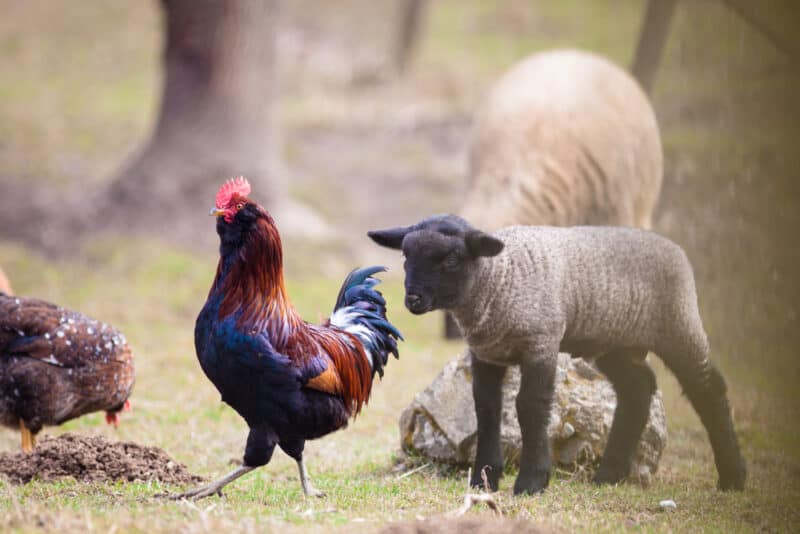
Of course, raising sheep with chickens isn’t totally effortless. There are a few things you’ll want to keep in mind for successful management.
1. Good Pasture Rotation is Essential
First and foremost is what I consider to be the golden rule to raising any kind of animal on pasture. You’ve got to rotate them.
If you don’t rotate your animals into separate paddocks, you are going to quickly develop issues with parasites, overgrazing, and plant death.
Therefore, you should make it a point to move your animals every few weeks. Although our chickens more or less free range inside the larger sheep paddock, the sheep are confined to smaller “sub paddocks.” They can only graze a certain chunk of pasture every couple of days. We move them with a portable electric fence system set up inside the permanent fence.
2. Coccidiosis
One common misconception that people have when it comes to raising sheep and chickens together is that it can’t be done due to the potential for the transmission of coccidiosis.
This is a bit of a misunderstanding, however.
Both sheep and chickens can get coccidia but the types of coccidiosis that affect each species, respectively, are different.
They are species-specific, so the kinds of coccidiosis that affect your sheep are not the same as the coccidiosis that affects your chickens. There is only one exception to this and that’s toxoplasmosis, but the likelihood of this disease causing problems with your animals is rare.
Again, as long as you are practicing good pasture management and rotation, this should not be a concern. Preventing overcrowding is another good way to eliminate the likelihood of coccidiosis being spread.
Contaminated feed, bedding, and drinking water are the most common methods of transmission for coccidiosis, so doing your best to keep things clean will lower your risk too.
3. Avoid Allowing Sheep Into Chicken Grain
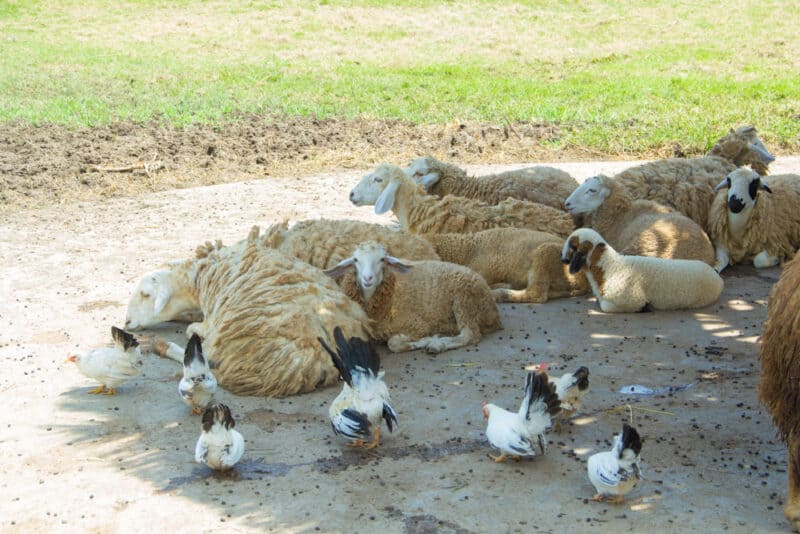
A very real problem we have had when raising sheep with chickens is that sheep love grain – but really should only have it in small amounts.
Add to that the fact that sheep seem particularly fond of chicken grain, which is high in calcium and also contains copper, a major no-no for sheep, and it’s of paramount importance that you keep your sheep out of the chicken grain.
To do this, consider keeping the chicken grain locked up inside the coop. That way, the chickens can get to it via a chicken-sized access door, but the sheep cannot. While you’re at it, double-check the size of your chicken entry door, as small lambs often find their way inside! You’ll want to make sure it’s small enough so they can’t weasel their way in.
4. Protect the Eggs
You will also need a way to protect your eggs from sheep damage. The method mentioned in the above tip, to protect the grain, should do the trick for you. As long as your sheep can’t get inside the coop, you’ll be fine.
With this issue, it’s not so much that your sheep will try to eat the eggs. However, they can step on them and break them, which can be a real pain and mess to deal with.
5. Build a Fence With Both Animals in Mind
When doing any kind of multi-species grazing, build a fence that is strong enough to keep the wiliest of the two animals out. When it comes to sheep and chickens, neither are particularly wily – but they have different limitations and capabilities.
We have found that electricity does not work well for chickens, as they can slip through the gaps too easily. With sheep, electricity works fine as long as you have an extremely high-powered charger. Sheep are very resistant to electricity, which makes sense – they’re insulated!
Consider building a page wire fence that has gaps that are small enough so chickens can’t slip through, but tall enough so that sheep can’t climb over and chickens can’t fly over, either.
You can line the interior with electricity if you want to set up separate interior paddocks to rotationally graze your sheep.
6. Don’t Forget About Aerial Predators
The fence around your chickens and sheep will do a good job of eliminating most kinds of predator pressure. However, it won’t do much when it comes to aerial predators. Therefore, consider how you will keep airborne threats like hawks and owls away from your chickens.
A covered run isn’t really an option if you’re free-ranging chickens out on pasture with your sheep. That said, providing your chickens with plenty of places to “duck and cover” can make a difference.
Consider elevating your coop or providing other overhangs so your chickens can get out of the way at a moment’s notice.
7. Salmonella Risk
You do need to mind the risk of salmonella, too. High levels of both Salmonella enterica and Campylobacter bacteria can be found in poultry feces. The udders of ewes can host the bacteria and transfer them to nursing young. These bacteria can be fatal to young lambs.
Again, keeping your chickens out of your sheep’s drinking water and feed is the most important way to prevent this disease. Your sheep aren’t that likely to deliberately eat chicken manure. Pasture rotation is also essential.
8. Lambing
A final note to mention is that you may want to keep your sheep and chickens separate at lambing time.
Chickens, as you know, are omnivores, and will eat just about anything. Your chickens may attempt to get into your lambing jugs. They will peck or otherwise harass newborn lambs as they go after the various birthing fluids on the little ones.
I would recommend just keeping the two animals separate at lambing time to avoid this problem altogether.
Should I Pasture Chickens and Sheep Together?
Ultimately, the decision of whether to raise sheep with chickens is up to you.
In my experience, there are many advantages to doing so, although there are of course additional considerations you must make before deciding if this option is right for you.
